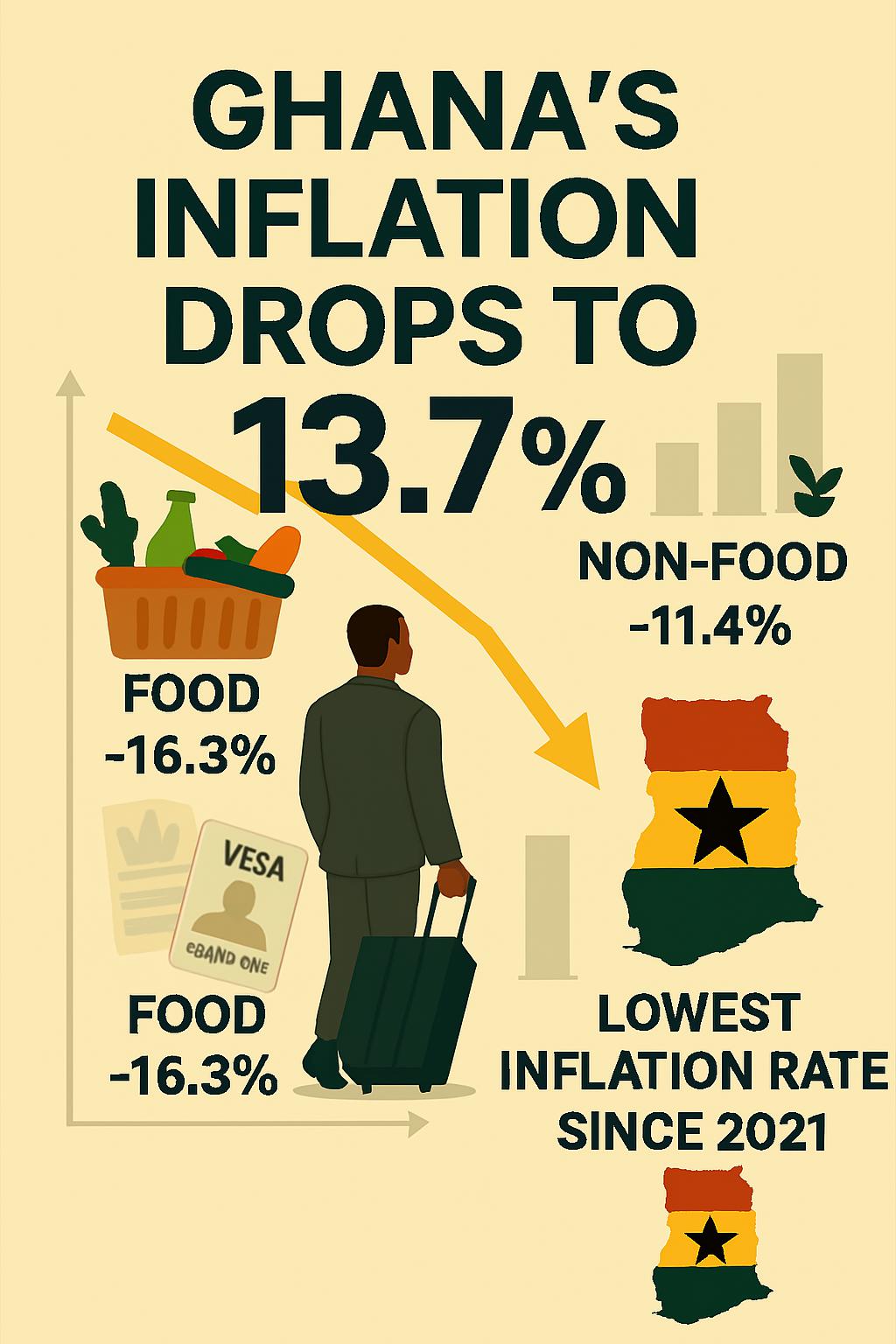Ghana’s Inflation Falls to 13.7% in June: A Turning Point for Households and Policymakers

Ghana’s inflation rate dropped sharply to 13.7% in June 2025, marking the lowest level since December 2021 and the sixth consecutive monthly decline, according to the Ghana Statistical Service (GSS). This significant drop from 18.4% in May signals a potential turning point in the country’s economic recovery, offering relief to households and renewed optimism for policymakers.
📉 What’s Driving the Decline?
The disinflation was broad-based, with notable reductions in:
-
Food inflation: Fell from 22.8% in May to 16.3% in June
-
Non-food inflation: Dropped from 14.4% to 11.4%
-
Core inflation (excluding energy and transport): Plummeted to 8.3%, down from 19.5%
Government Statistician Dr. Alhassan Iddrisu described the trend as a “real and sustained shift in price levels,” highlighting a month-on-month deflation of 1.2%, a rare occurrence in recent years.
🛒 What It Means for Consumers
The June data shows that Ghanaians paid less for goods and services compared to May. Items like charcoal, yam, cooked rice, and smoked herrings, which previously saw high inflation, recorded notable price declines.
For households:
-
There’s breathing room in monthly budgets
-
Bulk purchasing of foodstuffs is encouraged to maximize savings
-
Energy-saving strategies are recommended to offset utility costs
🏭 Impact on Businesses and Policy
The disinflation trend offers:
-
A more predictable environment for businesses
-
Opportunities to adjust pricing strategies to match consumer sensitivity
-
Incentives to increase local sourcing and reduce exposure to global supply shocks
The Bank of Ghana is now expected to cut its policy rate by up to 300 basis points, from 28% to 25%, according to IC Research. This could stimulate lending and investment, especially as bond yields and lending rates have already begun to decline.
🌍 Regional Disparities
Despite the national progress, inflation remains uneven across regions:
-
Upper West Region recorded the highest rate at 32.3%, driven by food and utility costs
-
Bono East Region posted the lowest at 8.4%
Dr. Iddrisu emphasized the need for granular data analysis to address these disparities and ensure inclusive economic relief.
🔮 Looking Ahead
With inflation easing, the government is optimistic about achieving single-digit inflation by early 2026. However, caution remains due to:
-
Potential fuel levy hikes
-
Expected electricity tariff increases in Q4 2025
The GSS advises maintaining current fiscal and monetary policies, while continuing targeted social programs to protect vulnerable populations.



0 Comments
No comments yet, be the first to comment